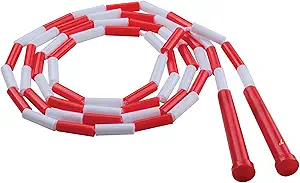The Ultimate Guide to Buying Climbing Rope: Types, Features, and Key Considerations
Overview
Climbing ropes are an essential piece of equipment for any climber, whether you're a beginner or an experienced pro. But with so many different types, features, and price points available, it can be overwhelming to choose the right one for your needs. In this guide, we'll break down everything you need to know about climbing ropes, from the different types available to the key features to consider when making your purchase.
Types
1. Dynamic Rope: This type of rope is designed to stretch and absorb the impact of a fall, making it the most common type of rope used for lead climbing. Dynamic ropes are available in a range of diameters, lengths, and UIAA fall ratings.
2. Static Rope: As the name suggests, static ropes do not stretch, making them ideal for rappelling, rescue work, and hauling heavy loads. They are also available in a range of diameters and lengths.
3. Single Rope: This type of rope is designed to be used on its own and is ideal for sport climbing and top-roping. Single ropes are available in a range of diameters and lengths.
4. Half Rope: Half ropes are designed to be used as a pair and are ideal for multi-pitch climbing. They offer more versatility than single ropes but require more skill to use properly.
5. Twin Rope: Twin ropes are also designed to be used as a pair but are thinner and lighter than half ropes. They are ideal for long alpine climbs but require careful handling to avoid tangles.
Key Considerations
1. Diameter: The diameter of a rope affects its weight, durability, and handling. Thicker ropes are more durable but also heavier, while thinner ropes are lighter but may wear out more quickly.
2. Length: The length of a rope depends on the type of climbing you plan to do. Sport climbers typically use shorter ropes, while trad climbers and alpine climbers may require longer ropes.
3. Weight: The weight of a rope can make a big difference in how it handles and feels while climbing. Lighter ropes are easier to handle but may not be as durable as heavier ropes.
4. UIAA and EN Ratings: These ratings indicate the strength and safety of a rope. Look for ropes with high UIAA fall ratings and low impact forces for maximum safety.
5. Sheath and Core: The sheath is the outer layer of the rope, while the core provides its strength. Look for ropes with a durable sheath and a strong core for maximum durability and safety.
Features
1. Dry Treatment: Ropes with a dry treatment are coated to prevent water absorption, making them ideal for wet conditions and ice climbing.
2. UIAA Fall Rating: This rating indicates the number of falls a rope can withstand before it needs to be retired.
3. Impact Force: This measures the force a rope exerts on a climber during a fall. Look for ropes with low impact forces for maximum safety.
4. Elongation: This measures how much a rope stretches during a fall. Look for ropes with low elongation for maximum safety and control.
Prices
Climbing ropes range in price from around $50 to $300 or more, depending on the type, length, and features. While it may be tempting to go for the cheapest option, investing in a high-quality rope is essential for your safety while climbing.
Tips
1. Always follow the manufacturer's instructions for use, care, and retirement of your climbing rope.
2. Inspect your rope regularly for signs of wear, such as frayed or damaged sheath, core, or stitching.
3. Use proper knots and belay techniques to avoid rope damage and accidents.
4. Store your rope properly in a cool, dry place away from sunlight and moisture.
FAQs
Q: How often should I replace my climbing rope?
A: It depends on how often you use it and how well you take care of it. Generally, climbing ropes should be retired after 5-10 years or if they show signs of wear or damage.
Q: Can I use a static rope for lead climbing?
A: No, static ropes are not designed to stretch and absorb the impact of a fall, making them unsafe for lead climbing.
Q: How do I choose the right diameter for my climbing rope?
A: The diameter depends on your personal preference, as well as the type of climbing you plan to do. Thicker ropes are more durable but heavier, while thinner ropes are lighter but may wear out more quickly.
Q: What is a dry treatment, and do I need it?
A: A dry treatment is a coating that prevents water absorption in the rope, making it ideal for wet conditions and ice climbing. If you plan to climb in wet or icy conditions, a dry-treated rope is highly recommended.
Q: Can I use a half rope as a single rope?
A: No, half ropes are designed to be used as a pair and should not be used individually.













